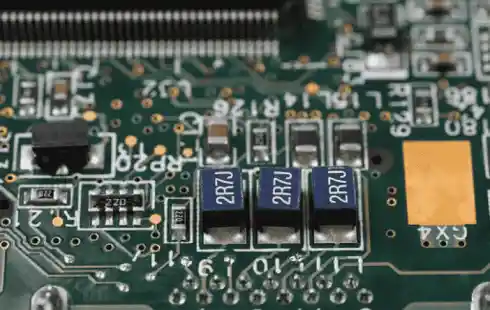
Revolutionising Websites for Cafés, Restaurants, and Bars Across Europe
Section: News
 Smart clothing, also known as wearable technology or e-textiles, represents the fusion of fashion and technology. This emerging field is transforming the way we interact with our garments by embedding them with digital components, sensors, and other advanced technologies. From health monitoring to enhanced athletic performance, smart clothing is poised to revolutionize our daily lives. This article explores the innovations, applications, and future potential of smart clothing.
Smart clothing, also known as wearable technology or e-textiles, represents the fusion of fashion and technology. This emerging field is transforming the way we interact with our garments by embedding them with digital components, sensors, and other advanced technologies. From health monitoring to enhanced athletic performance, smart clothing is poised to revolutionize our daily lives. This article explores the innovations, applications, and future potential of smart clothing.
What is Smart Clothing?
Smart clothing integrates electronic technology into textiles to create garments that offer more than just aesthetic appeal. These clothes are designed to monitor, respond, and adapt to various conditions, providing real-time data and interactive capabilities. They typically include sensors, microprocessors, and wireless communication devices seamlessly woven into the fabric.
Innovations in Smart Clothing
The development of smart clothing involves a range of cutting-edge technologies:
Sensors: These are the core components that monitor physiological signals such as heart rate, body temperature, and muscle activity. They can also track environmental conditions like UV exposure and air quality.
Conductive Fibers: Traditional wires are replaced with conductive fibers that can transmit electrical signals without compromising the garment's flexibility and comfort.
Power Sources: Miniaturized batteries or energy-harvesting technologies, such as solar panels integrated into the fabric, power these garments.
Data Processing Units: Tiny microprocessors embedded in the clothing process the data collected by the sensors and communicate with external devices, such as smartphones or computers.
Connectivity: Bluetooth and Wi-Fi capabilities enable smart clothing to connect with other devices, facilitating data transfer and remote monitoring.
Applications of Smart Clothing
Smart clothing has a wide range of applications across various sectors:
Health and Fitness: One of the most popular applications is in health and fitness. Smart shirts and sports bras can monitor heart rate, respiratory rate, and even muscle activity, providing athletes and fitness enthusiasts with valuable insights to optimize their performance and prevent injuries. Medical-grade smart clothing can continuously monitor patients' vital signs, providing early detection of potential health issues.
Sports and Performance: Professional athletes use smart clothing to gain a competitive edge. These garments can provide real-time feedback on form and technique, helping athletes improve their performance and reduce the risk of injury. Some smart clothing can also track hydration levels and fatigue, allowing for better training and recovery.
Everyday Wear: Everyday smart clothing is designed to improve comfort and convenience. For example, jackets with built-in heaters can keep you warm in cold weather, and fabrics with embedded LEDs can enhance visibility and safety for cyclists and pedestrians at night.
Fashion and Entertainment: Designers are exploring the creative potential of smart clothing to create interactive and dynamic fashion pieces. Dresses with color-changing fabrics, garments that respond to music, and accessories that can display notifications from your phone are just a few examples of how technology is being integrated into fashion.
Workplace Safety: In hazardous work environments, smart clothing can enhance safety by monitoring workers' vital signs and environmental conditions. For example, smart helmets and vests can detect dangerous levels of heat or gas and alert the wearer to take immediate action.
Challenges and Future Prospects
Despite the exciting potential, smart clothing faces several challenges:
Durability: Ensuring that electronic components withstand regular wear and tear, washing, and environmental exposure is a significant challenge.
Comfort and Design: Integrating technology into clothing without compromising comfort and style requires innovative design solutions.
Cost: High production costs can make smart clothing expensive, limiting accessibility for the general public.
Data Privacy: The collection and transmission of personal data raise concerns about privacy and security.
The Future of Smart Clothing
The future of smart clothing is promising, with continuous advancements in technology likely to address current challenges. As the technology becomes more affordable and widely adopted, we can expect smart clothing to become a standard part of our wardrobes. Potential future developments include:
Improved Energy Efficiency: Advancements in energy-harvesting technologies could lead to self-powered smart garments.
Advanced Health Monitoring: Smart clothing could integrate more sophisticated sensors capable of detecting a broader range of health indicators, providing even more detailed and accurate health data.
Enhanced Interactivity: Future smart clothing may offer more interactive features, such as gesture control and augmented reality integration.
Sustainability: Innovations in sustainable materials and manufacturing processes could make smart clothing more environmentally friendly.

Section: News

Section: News

Section: News

Section: Arts

Section: News

Section: News

Section: News

Section: News

Section: News

Section: Health

Health Insurance in Germany is compulsory and sometimes complicated, not to mention expensive. As an expat, you are required to navigate this landscape within weeks of arriving, so check our FAQ on PKV. For our guide on resources and access to agents who can give you a competitive quote, try our PKV Cost comparison tool.

Germany is famous for its medical expertise and extensive number of hospitals and clinics. See this comprehensive directory of hospitals and clinics across the country, complete with links to their websites, addresses, contact info, and specializations/services.

Unleash your creativity in this engaging art class designed for children and teens! Join Pavithra every Sunday from 10:00 AM to 11:00 AM at the Kulturzentrum Giesinger Bahnhof. This workshop is perfect for kids and teenagers aged 5-15, offering a wonderful opportunity to explore painting and drawing...
No comments yet. Be the first to comment!